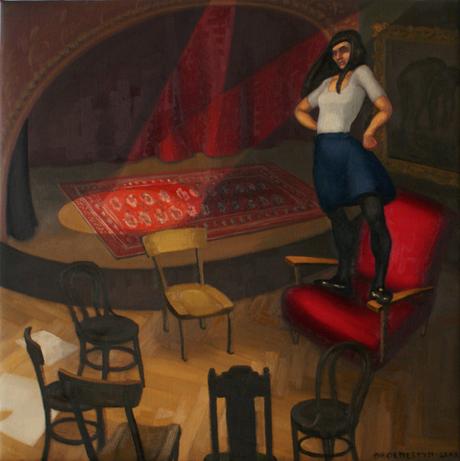
The drawing class (c) 2017 Samantha Groenestyn
Images seep into language, and in so doing they add color and liveliness. The metaphor chases after the potency of the image, abandoning the bald precision of description for a surprising visual equivalence painted in words. But Lichtenstein (1993: 204) is eager to persuade us that the image itself is something autonomous and specific. Though it can be imported into language, it does not consist in language. Nor is it simply the flipside of verbal description, an illustration of words. Our encounter with the image should reach beyond the boundaries of language.
Lichtenstein’s (1993 [1989]: 4, 63) incredible book, The Eloquence of Colour, champions the unruly and indispensable element of painting that is color, the rogue party in painting’s troubled relationship with philosophy. She sees in colour–stubbornly material, emotional and seductive–the very thing that makes painting both distinct and effective. It is the part that Plato could not subdue, when he rightly recognised the seductive and deceptive threat of the image. Plato’s move, Lichtenstein (1993: 142) explains, was swift and decisive: he derailed the theoretical hopes of the image by framing the debate on the territory of language. The image must defend itself by the standards of discourse, and so too must painting if it wishes to emerge from the mechanical arts and prove itself a ‘legitimate form of knowledge’ (Lichtenstein, 1993: 204).
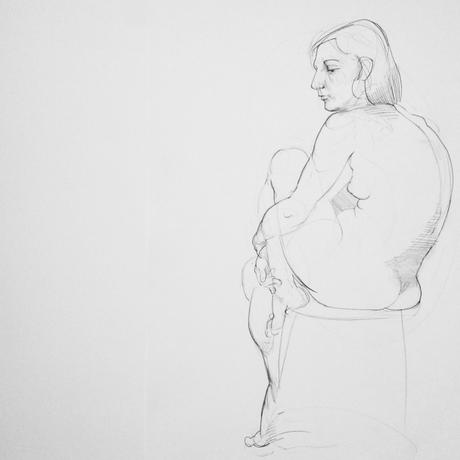
Even Aristotle’s defence of the visual does not challenge this founding assumption, which has plagued the visual and performative arts ever since (Lichtenstein, 1993: 62). He resigns himself to the ontologically deficient status of materiality, to the inferiority of appearances and the Spectacle (Aristotle. Rhet. III.1, 1404a1-4, trans. Roberts; Poet. B.6, 1450b17-19, trans. Bywater; Lichtenstein, 1993: 63). Colour suffers from this prejudice more than drawing–for drawing is crisp and measurable, and able to describe a story, and thus more readily tamed for discursive purposes. Yet in defining the image as something linear and illustrative–as the metaphor–philosophical discourse frames the question for its own advantage, constructing a straw man which it then proceeds to dominate (Lichtenstein, 1993: 44; 82). Painting, resplendent with colour, defies discourse because it does not consist entirely in drawing. The image ought to defend itself precisely on its own non-discursive grounds.
This discursive attack that puts the image on the defensive is precisely the fate suffered by rhetoric, and Lichtenstein thus finds in rhetoric an unexpected ally for painting (Lichtenstein, 1993: 205). Discourse seeks to distance itself from rhetoric, demanding logical rigour in arguments above persuasive delivery of them. The visible, theatrical aspects of speech open the door to all manner of deception. The charge of sophistry is levelled at both rhetoric and painting, Lichtenstein (1993: 68) argues, not simply because they are visual, but because of how persuasive the visual is. Their very charm, their incontestable effectiveness, is exactly what sparks this mistrust.

Discourse may color itself with metaphors, but rhetoric strides to the edge of logical argument, sets its words aside and simply shows us. We hear the image in discourse; we simply see it in rhetoric (Lichtenstein, 1993: 129). Action is no metaphor. A forceful gesture is forceful; a proud bearing is proud; a wavering voice does waver; a heavy silence bears down on us heavily. ‘Persuasion is clearly a sort of demonstration,’ says Aristotle (Rhet. I.1, 1355a4-5). These actual, active demonstrations threaten language–they suggest a deficiency in language, and they hint at their own independence from language, their escape from the carefully defined terms of language (Lichtenstein, 1993: 92, 111). The hierarchy of language above the image might be overturned, the image might prove stronger.
But neither Lichtenstein nor Aristotle attempt to invert the traditional hierarchy. Lichtenstein (1993: 75, 111) would rather abandon hierarchies altogether, and clarify instead how the visible and the discursive complement one another. Aristotle (Rhet. I.1, 1355a20-25, 1356a20-25) still requires that the orator ‘be able to reason logically,’ and thus considers rhetoric ‘an offshoot of dialectic’ rather than a rival; the orator cannot afford to let truth itself go unnoticed merely because his audience pays too little heed to his intricate arguments. Platonism urges us to look for hierarchies and homogeneity in theories of representation, Lichtenstein (1993: 55) suggests; Aristotelianism tends to permit more heterogeneous theories of representation, the kinds that embrace logically elusive concepts like desire and pleasure.
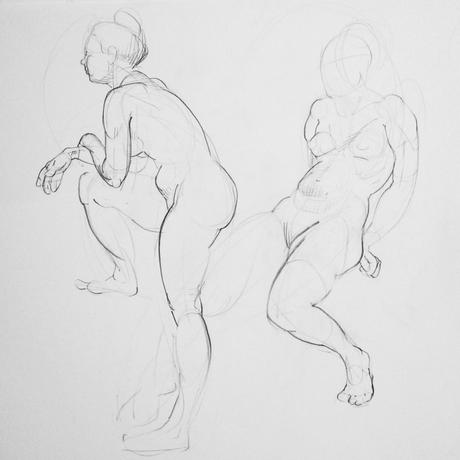
The sign itself represents the attempt to ‘master the image logically’ (Lichtenstein, 1993: 51). The sign models representation on language: it assumes that representation, too, must be discursive. It implies that every visual, like a word, stands in for what it represents, and that this is how it acquires meaning. There is a referential relationship between the sign and what it signifies (Lichtenstein, 1993: 179). Lichtenstein counters that meaning exists in the image as a unity, it permeates its materiality; even without precise contours a painting can persuade us through a haze of convincing colours–the part that Descartes (2008 [1641]: 15) says remains true when all else is fictitious. Wherever we try to interpret, we seek a referent for a sign; whenever we speak of resemblance, we are making a comparison between two disconnected things, we are approaching the painting with a discursive attitude (Lichtenstein, 1993: 51). Representation is much simpler if we take rhetoric as our model: the painting, like the orator, simply re-presents the very object or emotion before our eyes (Lichtenstein, 1993: 123). It does not tell, it shows.
The most pressing thing, then, is not how much a painting resembles its referent, how accurately it embodies this information, but rather how captivating it is. The painting must, like the orator, hold our attention, capture our fancy, and move us. Lichtenstein (1993: 180) argues that ‘truth in painting lies in the effect of the representation on those who see it’–that representation consists in perception, which takes place in the viewer, not reference, a relation between the painting and its referent.
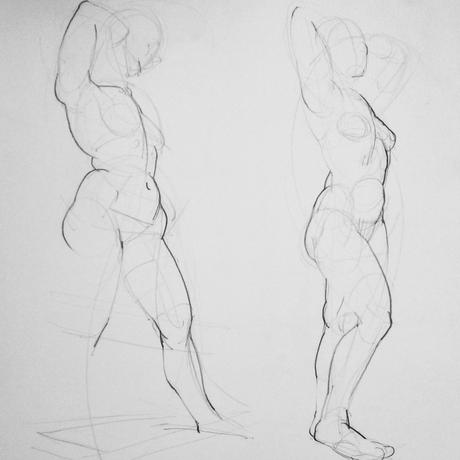
Insisting on the effect rather than the internal cohesiveness of the painting itself, and on what the artist intended to embed in it, seems problematic at first glance. But this emphasis on perception has less to do with private, subjective interpretations of a painting by scattered viewers, and more to do with an immediate sensory encounter with it. For interpretations, you will recall, are discursive decodings of images. In placing perception at the center of our theory of representation, we are exchanging the cerebral encounter with the painting for a sensory one: we are approaching it on material grounds, responding to its material presence with our bodily awareness. We let our eyes apprehend the painting, we let them roam where it urges them, we let its mood wash over us, we trust its silent proddings rather than searching for intellectual substitutions we might make.
Unlike the discordant diversity of subjective interpretations, I would argue that this immediate sensory apprehension brings us much nearer to the intention of the artist. It is the way a painting seems to ‘come across directly onto the nervous system,’ as Bacon (1975: 18) strives after; it reflects Wollheim’s (1987: 43) observation that the artist assumes the dual role of artist and spectator in one, constantly testing and retesting the painting’s effect on herself, in order to know whether it will have the same effect on other spectators. ‘The painter’s pleasure is also that of the viewer’ (Lichtenstein, 1993: 182). The spectator comes nearer the painter’s intention if he simply perceives the painting and lets its silent visual elements work on him.
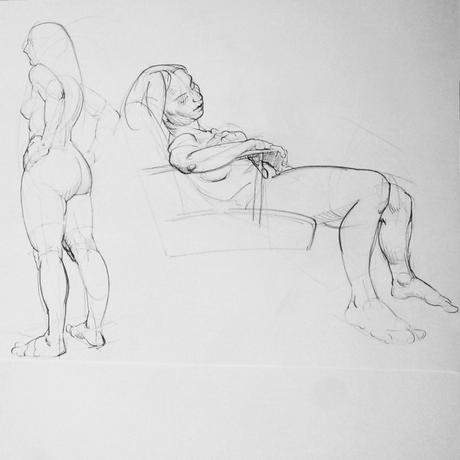
Yet even the path of perception is fraught with philosophical difficulties. Descartes has long since challenged the ontological status of sensory perceptions, finding a way to convert them into intellectual ideas independent of the body. For if we experience sensations in our dreams, they must, reasons Descartes (2008 [1641]: 14; 20-1), have very little to do with physical experience. Scoring points on the side of discourse, he (2008 [1641]: 23) concludes that ‘perception … is an inspection by the mind alone.’ Kant (2009 [1783]: §1; §10) is clear to point out that we are dealing with metaphysics, not physics; whatever a physical thing is, he argues, all we can measure is our own idea of it. Materiality has suffered heavily under our discursive tradition of metaphysics. Arguing for the significance of the material and our perception of it is no small task within this enduring theoretical domain.
Perhaps the best route out is that suggested by Lichtenstein (1993: 182): to prove that illusion is no deception, for the simple reason that it shows itself. The illusion never asks us to believe in its truth, it never attempts to stand in for reality. It shows us something of the world, all the while admitting its own artifice, and we indulge ourselves momentarily in the illusion because it is pleasurable (Lichtenstein, 1993: 179). Painting is comparable to cosmetics: it seeks to delight us, to captivate us, to seduce us, but not to trick us into believing in a false reality. This playful artifice does not deserve the accusation of sophistry, argues Lichtenstein (1993: 187); rather, the kind of persuasion that promises truth by airtight feats of logic but quietly leads us astray is sophistry. ‘What makes a man a ‘sophist’ is not his faculty, but his moral purpose,’ retorts Aristotle (Rhet. I.1, 1355b15-20). The key, Lichtenstein (1993: 181) insists, lies in realising that truth in painting, like in rhetoric, is measured by its effectiveness in the spectator, not by its relation to reality or our idea of it.
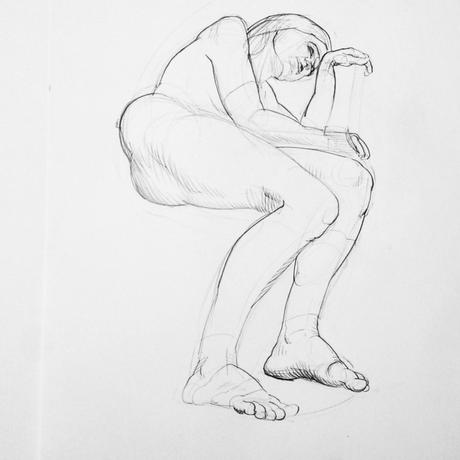
To establish painting’s theoretical validity, then, on the grounds of its rhetorical persuasiveness rather than on discursive grounds, we need to show how this effectiveness can be deliberately achieved. Generally, a discipline has had to prove itself on both theoretical and pedagogical grounds to be recognised as a liberal art: Lichtenstein (1993: 139) describes the rocky emergence of the Royal French Academy in 1635 and painting’s troubles in both domains, particularly the reluctance of the newfound professors to verbalise their practice. Lichtenstein (1993: 152) surmises that ‘drawing is the only thing in painting that can really be subjected to rules’–and thus the only part of painting which can truly be taught, and systematically theorised about. Here we will raise a resounding objection: color can indeed be taught, and thus we can put forward an alternate way of theorising about painting, one that suits color and drawing equally, and that accommodates a perceptual theory of representation.
First we need to be clear what we mean by ‘rules.’ I am not endorsing binding, homogeneous laws of painting. Rather, I am arguing for systematic, orderly but adaptive principles that approximate our perception and work in conjunction with it. They explicitly avoid the strict recipes and dogmas of the studio; they permit great but knowledgeable flexibility in technique. They require each artist to develop her own sensibility, to order her perceptions according to her own aesthetic preferences–they demand great facility and understanding but also offer the greatest liberation from rules and haphazard fortuitousness alike. They are not rules at all.
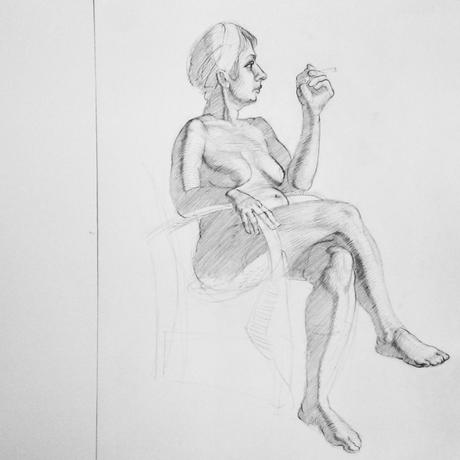
They are the kinds of systems described by Panofsky (1991 [1927]: 28-30) in his book on perspective, which emphasises the difference between the rigid mathematical space that our linear perspective imposes upon space as we actually perceive it through two spherical eyes, but which we adapt to our aesthetic purposes nonetheless, and the kind of systems described by Runge (1810) and more lately by David Briggs (2017) which describe color space three dimensionally, either strictly geometrically like Runge, or in conjunction with light indices like Briggs. These systems deny absolutes; they acknowledge that what we perceive is difficult to describe, but they find relational ways to do so that encourage the active participation of the artist.
And, being able to be taught, these systems meet both the theoretical and the pedagogical requirements of a liberal art (Lichtenstein, 1993: 151). They achieve all this far from the narrow demands of language and discourse, holding fast to a rhetorical conception of representation, embracing what is explicitly visual in painting, preserving and promoting its characteristic and autonomous effectiveness.

Aristotle. 1984. The Rhetoric and the Poetics. Edited by Edward P. J. Corbett. Translated by W. Rhys Roberts and Ingram Bywater. New York: The Modern Library.
Briggs, David. 2017. The Dimensions of Colour. www.huevaluechroma.com
Descartes, René. 2008 [1641]. Meditations on First Philosophy: With Selections from the Objections and Replies. Translated by Michael Moriarty. Oxford: Oxford University.
Kant, Immanuel. 2009 [1783] Prolegomena zu einer jeden künftigen Metaphysik, die als Wissenschaft wird auftreten können. Edited by Rudolf Malter. Reclams Universal-Bibliothek, Nr. 2468. Stuttgart: Reclam.
Lichtenstein, Jacqueline. 1993 [1989] The Eloquence of Colour: Rhetoric and Painting in the French Classical Age. Translated by Emily McVarish. Berkeley: University of California.
Panofsky, Erwin. 1991 [1927]. Perspective as Symbolic Form. Translated by Christopher S. Wood. New York: Zone.
Runge, Philipp Otto. 1810. Farbenkugel: Konstruktion Des Verhältnisses Aller Mischungen Der Farben Zueinander Und Ihrer Vollständigen Affinität. Köln: Tropen.
Sylvester, David, and Francis Bacon. 1975. Francis Bacon. 1st American ed. New York: Pantheon.
Wollheim, Richard. 1987. Painting as an Art. London: Thames and Hudson.

